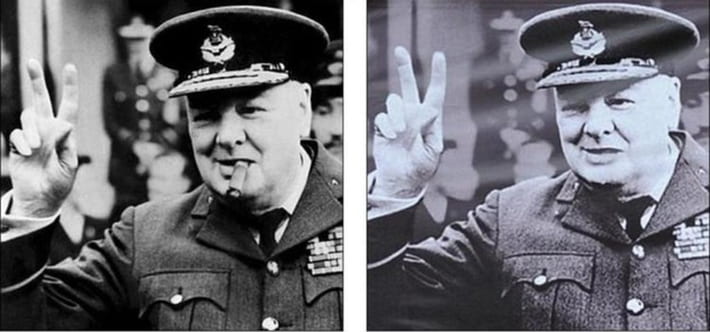1. What does Ritchin mean with the “fluidity of the digital”? Give an example of digital imaging/digital photography that exemplifies this.
“Fluidity of the digital” replaces the mechanical age with the “post-photographic age”. By changing the architecture of the image, digital photography is not just another kind of photography but another medium.
“Fluidity of the digital” is created by implementing digital editing technology that can easily manipulate photographs. The photograph transfer from a whole to ” a collaged series of composites”(19).
Therefore, it makes the photographs unreliable and no longer objective, even “removes the automatic authority of the camera”(15). “Fluidity of the digital” fully changes the essence of photography from simple objective documentation of reality to the conversation held by photographers to express ideas. The photographers change from the witness to “image designers”(19). Like what Ritchin said, “‘the picture never lies’ can be replaced by ‘the picture suggests ideas'”(19). “Fluidity of the digital” makes photos more synergistic and utilizing, which shows a more conceptual and imaginary reality.
Here’s a photo displayed in the Imperial War Museum that shows “Fluidity of the digital”. In which, Churchill’s cigar was removed. The reality of Churchill smoking was covered, which shows the unreliable feature of the photo. While at the same time, we can clearly see the museum’s anti-smoking ideology and their strong will to build a perfect Churchill figure.

2. Reflect on the extent to which photography is capable of capturing reality; and compare it to other media (technology) (e.g. text, video, virtual reality, books).
None of them can fully document the reality. Without any digital editing, even a different choice of angle and different lighting of the shot can affect their recording.
By comparison, the text is the most subjective, but also the least restrictive. It can transcend time, space, and even the senses. But again, because it is so subjective, different writers will not have the same perspective, which affects their ability to capture reality.
Photography has a more limited perspective in comparison. From the time perspective, photography is limited to one moment. But this is started to be changed, for example, Apple’s live photos can be a moving images. Perhaps in the future, pictures will not be limited by time, but the line between pictures and videos will also need to be redrawn.
Photography is a record of reality in the form of vision. Although the vision presented in the camera is not exactly the same as human vision, it still mostly restores human vision. Video not only surpasses pictures in terms of time, but because of the flexibility that time brings, video can switch angles and surpass pictures in terms of space. In addition, the video adds sound, which also makes the video surpass the picture from the sensory view.
As for virtual reality, probably because of the technology, although it crosses the space and turns two-dimensional into three-dimensional, it does not have enough realism but stays more in the space of virtual and imaginary construction. Therefore, in this sense, it is less capable of capturing reality than photography.